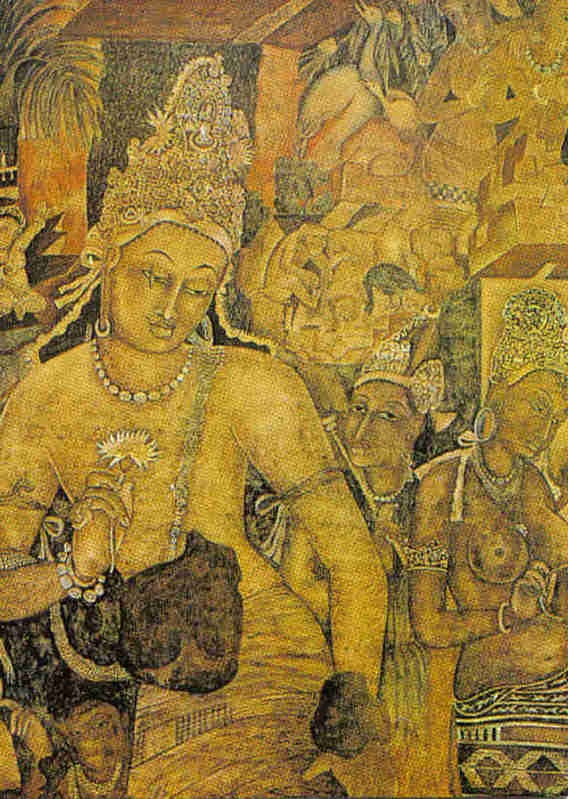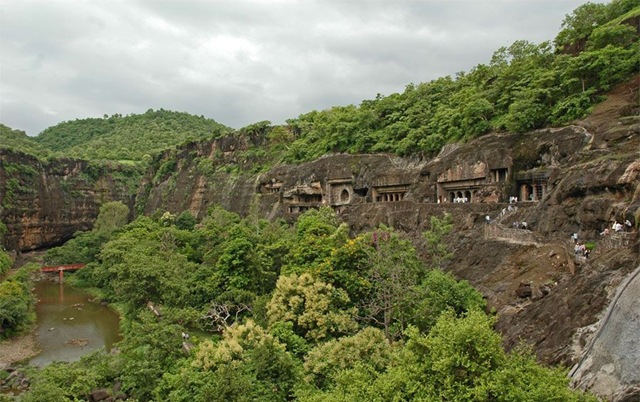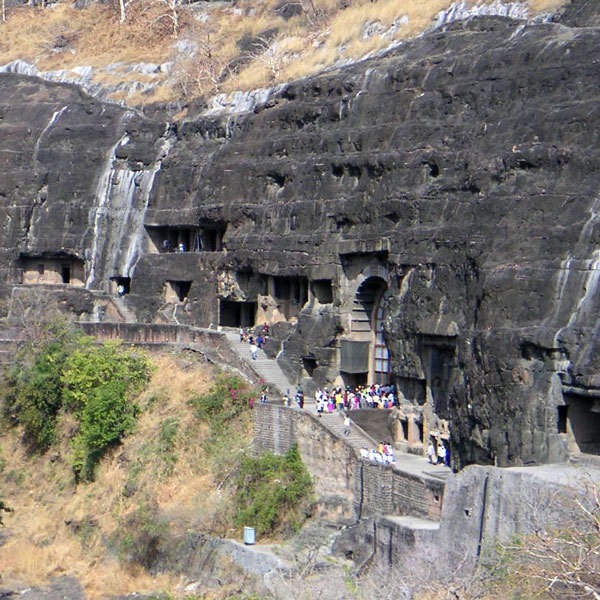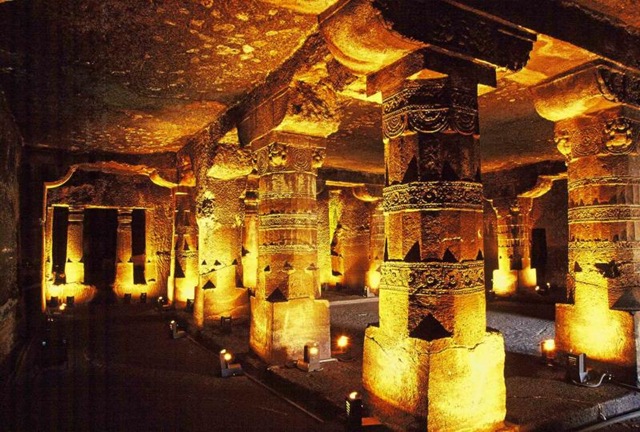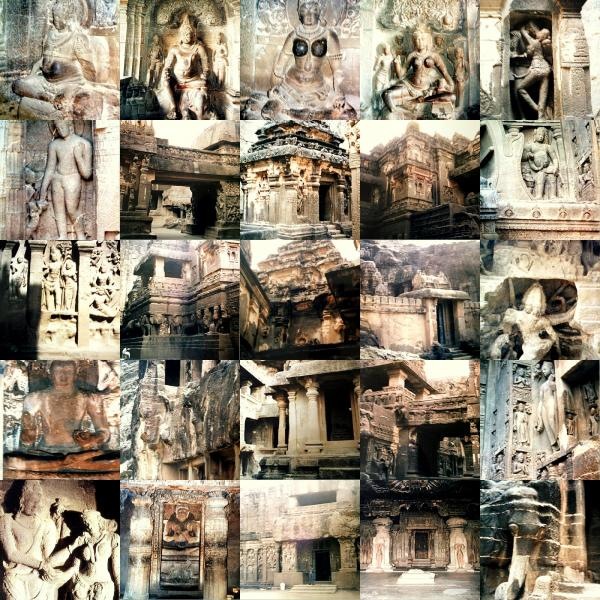The Ajanta Caves locally known as (Ajiṇṭhā LēṇīMarathi: अजिंठा लेणी) in Aurangabad district of Maharashtra state of India are about 30 rock-cut Buddhist cave monuments which date from the 2nd century BCE to about 480 or 650 CE The caves include paintings and sculptures described by the government Archaeological Survey of India as "the finest surviving examples of Indian art, particularly painting", which are masterpieces of Buddhist religious art, with figures of the Buddha and depictions of the Jataka tales.The caves were built in two phases starting around the 2nd century BCE, with the second group of caves built around 400–650 CE according to older accounts, or all in a brief period of 460 to 480 according to the recent proposals of Walter M. Spink. The site is a protected monument in the care of the Archaeological Survey of India, and since 1983, the Ajanta Caves have been a UNESCO World Heritage Site.
With the Ellora Caves, Ajanta is the major tourist attraction of the Marathwada region of Maharashtra. About 59 kilometres (37 miles) from Jalgaon railway station on the Delhi – Mumbai line and Howrah-Nagpur-Mumbai line of the Central Railway zone, and 104 kilometres (65 miles) from the city of Aurangabad. They are 100 kilometres (62 miles) from the Ellora Caves, which contain Hindu and Jain temples as well as Buddhist caves, the last dating from a period similar to Ajanta. The Ajanta caves are cut into the side of a cliff that is on the south side of a U-shaped gorge on the small river Waghur and although they are now along and above a modern pathway running across the cliff they were originally reached by individual stairs or ladders from the side of the river 10–35 m (30–110 ft) below.
The area was previously heavily forested, and after the site ceased to be used the caves were covered by jungle until accidentally rediscovered in 1819 by a British officer on a hunting party. They are Buddhist monastic buildings, apparently representing a number of distinct "monasteries" or colleges. The caves are numbered 1 to 28 according to their place along the path, beginning at the entrance. Several are unfinished and some barely begun and others are small shrines, included in the traditional numbering as e.g. "9A"; "Cave 15A" was still hidden under rubble when the numbering was done. Further round the gorge are a number of waterfalls, which when the river is high are audible from outside the caves.
The caves form the largest corpus of early Indian wall-painting; other survivals from the area of modern India are very few, though they are related to 5th-century paintings at Sigiriya in Sri Lanka. The elaborate architectural carving in many caves is also very rare, and the style of the many figure sculptures is highly local, found only at a few nearby contemporary sites, although the Ajanta tradition can be related to the later Hindu Ellora Caves and other sites




